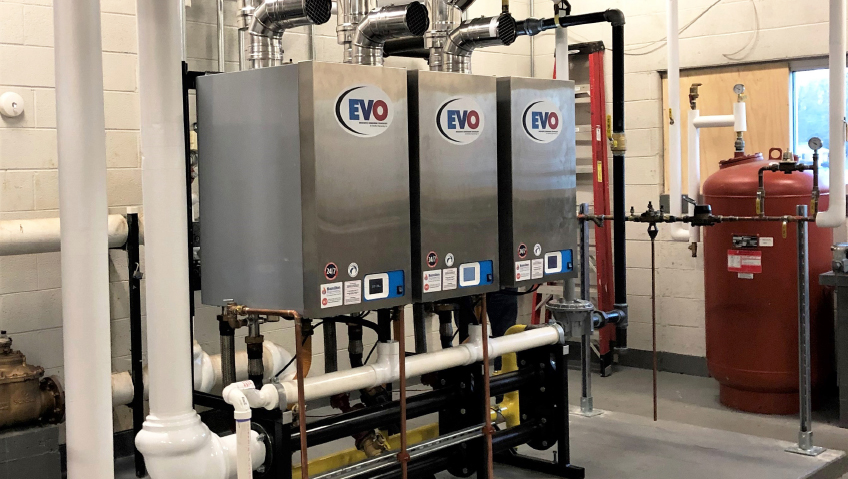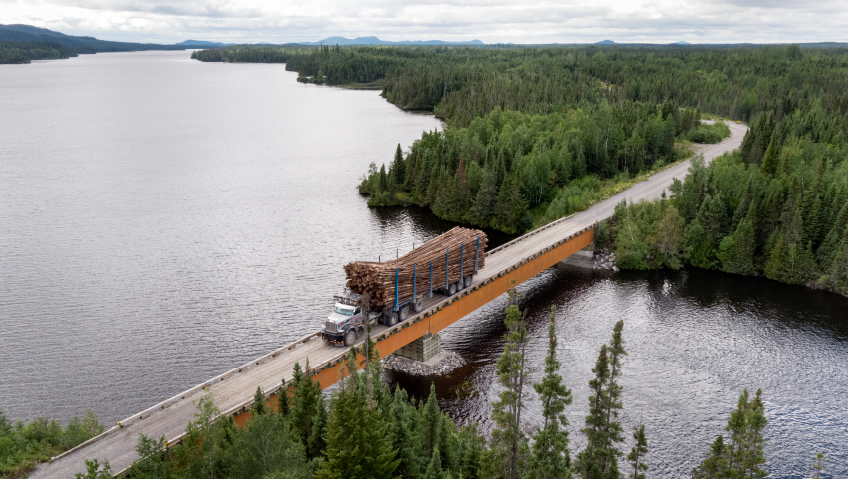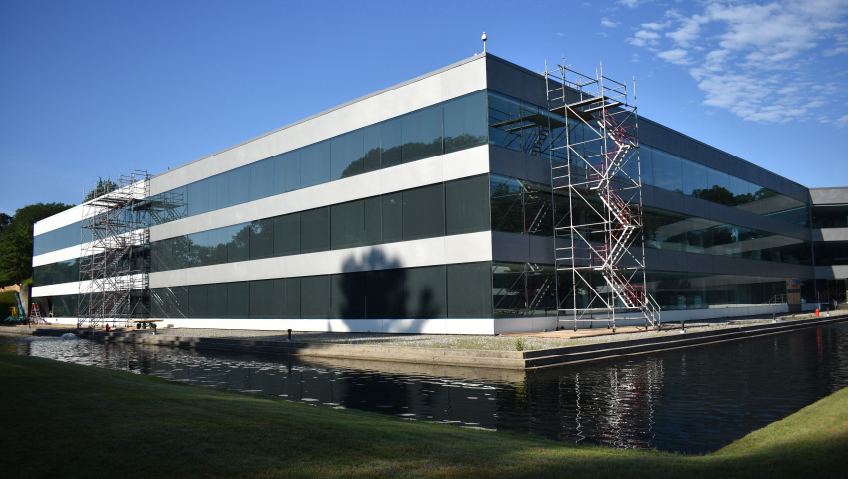Large buildings usually have large utility usage. But Livonia, Michigan-based Performance Engineering Group is out to correct the massive waste caused by oversized equipment in buildings across North America through visionary, precision engineering, and its mission is catching on fast. With a focus on preventing water waste, this company also offers radiant floor heating, snow-melting technology, and a range of conversion options for buildings that use hydronic or steam heating.
Performance Engineering Group’s proven theories on preventing utility waste in large buildings have some of the biggest names in property management paying attention. Because, in the process of ‘listening’ to buildings—as its founder likes to say—the company provides owners with data proving that most multi-story buildings like hotels, office blocks, mixed residential buildings, and even hospitals are not geared toward optimum utility savings.
Uncovering the resources wasted annually often comes as a shocking but welcome eye-opener to building owners. The company’s data is supported by The International Association of Plumbing & Mechanical Officials (IAPMO), the developer of a next-generation water demand calculator tool. The Performance Engineering team had the data needed to validate the tools that they were creating. The company predicts that the accuracy of the new tool will fundamentally change how water consumption and supply gets measured in building design going forward.
The company is forever innovating, and its solutions also include ways of optimizing equipment at low-to-no cost to extend the lifespan and minimize the cost of ownership by reducing wear and tear on equipment and systems.
More good news is that the company is saving property owners significant amounts of money throughout the existence of their buildings, all while taking the pressure off the environment and the infrastructure and labor resources needed by local authorities to provide high volumes of utilities like water. As part of water conservation, its new booster pump systems are catching on fast. Many of these improvements are significantly less expensive than a direct replacement of the original capacity with like features. The company is continuously improving the engineering to generate outcomes so owners can achieve tremendous savings on their utilities in the long run. As shown by a twenty-five percent growth in just over a year, customers agree.
The company saves customers far more money over time than the initial installation costs in the start-up capital outlay. “When we do booster pump analyses, considering the cost of construction versus the operational costs is important as [this technology] can reduce operational energy costs by eighty to ninety percent,” says President Alan Deal, an outdoor enthusiast passionate about engineering and protecting natural resources.
As a longtime expert in assessments of pumping systems for potable water, process water, and other hydronic systems, the company has become the go-to solutions provider for many forward-thinking building owners, making this one of its most sought-after services at present. “We found a willing partner with Grundfos Pumps local distributor H.S. BuyVan Associated, who collaborates with us on pumping arrangements and motor optimization,” shares Deal. The systems offered will streamline construction and reduce the building space and infrastructure required for these types of essential systems.
“It is the next phase of what we want to get involved with. We have been doing this type of work for a long time… We eat, sleep, and drink this philosophy. I’ve taught plumbing engineers how to size water heating and pumps for a long time,” Deal says, pointing out that far too little has changed in plumbing over the last century. “One of the things that have been puzzling is that we have always referenced ancient procedures that have been around for almost a hundred years. Everybody knows that [old systems] are generously oversized, and there is a risk with that.”
One of the potential problems posed by too-large water heating systems is waterborne disease contamination risks due to stagnant water in building distribution piping. Mitigating this, of course, takes precedence over preserving resources like water and electricity.
Performance Engineering Group is typically employed by building owners and managers who need to replace equipment like water heaters. As it is common for older buildings to have lived through several upgrades in their time, fixtures are often changed and then forgotten. Deal points out that, even though the older units often still work, measuring utility consumption has taught company engineers that a reduction of as much as ninety-eight percent on equipment run-time is not uncommon once the team makes comparatively minor adjustments.
“It is not an anomaly. We seem to run into it everywhere. It has now been included in the energy code fifteen years ago but nobody seems to pay attention to it,” Deal says, equating the lack of code enforcement on this issue to mattress tags that come with the threat of prison if removed. “We are not trying to enforce the code, however. We are just trying to help people make better decisions and not waste as much money.”
Not all building owners realize the importance of conducting utility audits on large buildings. Many believe that if everything is working and tenants are happy then their job is done but turning a blind eye to waste just extends the problem. “It is a team effort. Having a willing owner and facility director who get that they can achieve a great amount of improvement and spend less money is the part that is incongruent with most construction. We are spending less to get more,” Deal says of the company’s offering.
COVID-19 also provided an opportunity to extend its product range by diversifying its selection of energy sources and equipment. Its own building systems now include best practice LED lights, night setback settings to lower central heating during the wee hours, occupancy sensors, remote workforce settings, plus recycling and scrapping metal and other waste solutions. “We have relationships with organizations that will re-purpose leftover materials from construction projects.”
Growing up with seven siblings as the son of a partner in a water heater supply firm, Deal became taken with the concept of measuring resource consumption during a school project in third or fourth grade. “It was a function of starting to learn data collection, and it just stuck with me,” he says. “So when we get into places where we see these massive systems and we see them barely being used, we know we have to do a better job if we are going to do anything toward sustainability.”
According to Deal, the change can be as extreme as eight-inch piping that allows for pumping 500 gallons per minute that should have been installed with two-inch piping that allows for pumping fifty gallons per minute, yet makes no difference to the user experience. “That is the kind of sustainability that, in my mind, we need to implement so that we can do a better job of building,” he says.
Deal went into business with his father nearly a decade after completing his studies and working as a performance contractor on energy conservation for boiler installations, mainly at air bases. By then, the original company had focused its offering primarily on vehicle wash applications, but he opted to continue moving in his existing direction.
Starting out providing natural gas heating systems for hot water supply, hydronic heating, and radiant snow melting systems, the company completed thousands of projects in the commercial, agriculture, industrial, and residential markets. Later, it moved into performance contracting and steam-plant-to-hydronic-system conversions at numerous military bases and similar central energy plants. To further enhance its capabilities, the company incorporated optimized pumping and delivery systems over time, as a necessary part of successful boiler plant capacity reduction.
Today, its team of twelve guides the company in gaining an ever-growing knowledge base and implementable engineering solutions that truly set it apart from what is currently available on the market. “We have a lot of people in our organization that bring different ideas and solutions to the table. When we get together, the combination is good. We get to find resolutions for doing the best thing possible. This business does not start with any one person but with collaboration. We work from there,” says Deal. The result is a remarkable level of innovation in the field that has garnered the company the respect of many and longstanding customer relationships.
One example of such a relationship can be seen in a six-year project that will soon be concluded for Livonia Public Schools. It took two cycles of performance contracting for the school facilities team and administration to conclude that a completely new approach would be the only solution to achieve their building performance goals.
“The projects involved collaboration with a new start-up partner, Unified Building Systems Engineering, which would use our data collection process and analysis to revise the building systems heating plants and associated delivery systems,” explains Deal. The other key collaborator was Hamilton Engineering, a division of Armstrong Steam, based in Livonia, that provided the engineered boiler systems pre-packaged for rapid and seamless installation during the summer.
“We helped them to discover their true building loads through the building management system and other data sources. The results allowed them to replace all the building heating plant systems in thirty-four buildings with sixty percent less boiler and pumping capacity, ninety percent less pumping horsepower, and using forty percent less energy,” says Deal. “The highlight was that they did these projects with $4,000,000 in sinking fund monies instead of having to pass a separate millage for the original system capacity replacement.”
Doing good comes naturally for this team, which generously contributes to groups like U.S. Green Building Council houses of worship members, which benefit from pro bono reviews of facilities and equipment assessments and extensive consultations. “We are occasionally asked for donations of replacement water heating systems for homeless shelters, mission-based organizations and the like, and we always try to respond with the most appropriate technology that will provide the lowest cost of operation and most dependable operation for their needs. It is amazing how a person’s disposition can be lifted with clean clothes and a warm shower!”
Just as important as being a part of the future of education is to the team, being a driving factor in the future of accurate building performance metrics is also a matter of great importance. “Virtual reality/augmentation/simulations can distort perceptions. Seeing is believing. We measure, we meter, and we provide real results above and beyond what we say we will,” Deal continues.
Deal is also hopeful that the world’s mission to accomplish net zero will remain underscored by the understanding that lasting solutions must encompass a consideration for their overall impact on the environment and that automatically reaching toward electrification is not the only option. The team’s hard-earned experience in the field proves that paying attention and tailoring options instead of reaching for the cheapest or easiest solution may be best in the long run.
Because building a veritable knowledge bank of everything that can go wrong and should be considered in optimized solutions has taken so many years, leveraging such valuable knowledge is no small matter. It is arguably also the company’s most prized factor that leads to remaining in the lead in its field. In 2016, it was honored with the Governor of Michigan’s Energy Excellence Award for energy innovation and unique project results in senior-housing mechanical system renovations for the second consecutive year.
“To purposefully test system limits and learn from them is the number-one technology. Ultimately, this technology distills what is important and what is not. That is what takes time,” Deal says. Just like the company itself, the value of this tireless work has indeed stood the test of time.






